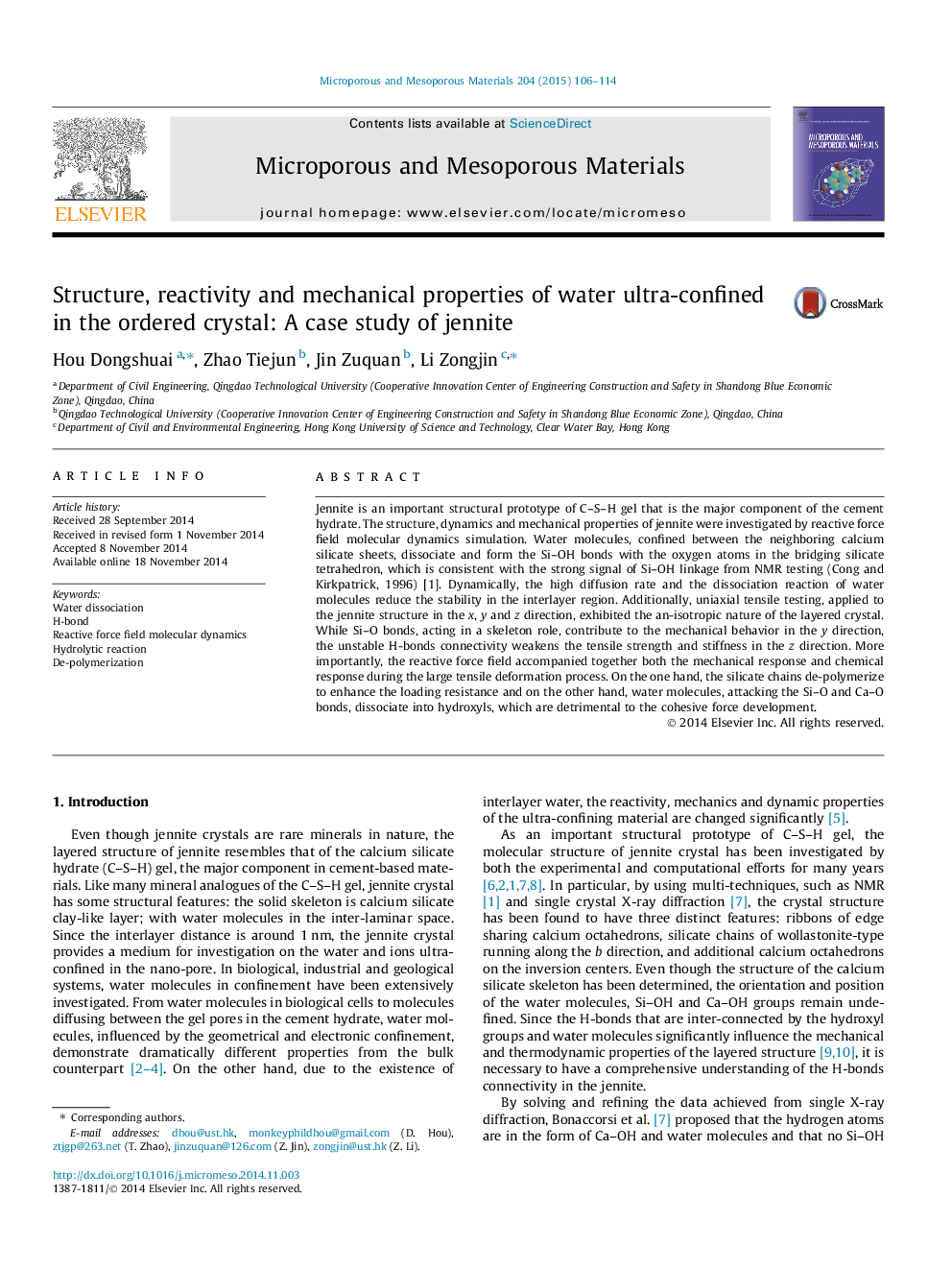| Article ID | Journal | Published Year | Pages | File Type |
|---|---|---|---|---|
| 72739 | Microporous and Mesoporous Materials | 2015 | 9 Pages |
•Water dissociates into more Ca–OH than Si–OH in interlayer region.•Water confined in the nano-pore has dense H-bond with silicate skeleton.•ReaxFF combines the mechanical performance and chemical reactions.•Water dissociation is activated in the presence of tensile loading.
Jennite is an important structural prototype of C–S–H gel that is the major component of the cement hydrate. The structure, dynamics and mechanical properties of jennite were investigated by reactive force field molecular dynamics simulation. Water molecules, confined between the neighboring calcium silicate sheets, dissociate and form the Si–OH bonds with the oxygen atoms in the bridging silicate tetrahedron, which is consistent with the strong signal of Si–OH linkage from NMR testing (Cong and Kirkpatrick, 1996) [1]. Dynamically, the high diffusion rate and the dissociation reaction of water molecules reduce the stability in the interlayer region. Additionally, uniaxial tensile testing, applied to the jennite structure in the x, y and z direction, exhibited the an-isotropic nature of the layered crystal. While Si–O bonds, acting in a skeleton role, contribute to the mechanical behavior in the y direction, the unstable H-bonds connectivity weakens the tensile strength and stiffness in the z direction. More importantly, the reactive force field accompanied together both the mechanical response and chemical response during the large tensile deformation process. On the one hand, the silicate chains de-polymerize to enhance the loading resistance and on the other hand, water molecules, attacking the Si–O and Ca–O bonds, dissociate into hydroxyls, which are detrimental to the cohesive force development.
Graphical abstractFigure optionsDownload full-size imageDownload as PowerPoint slide
